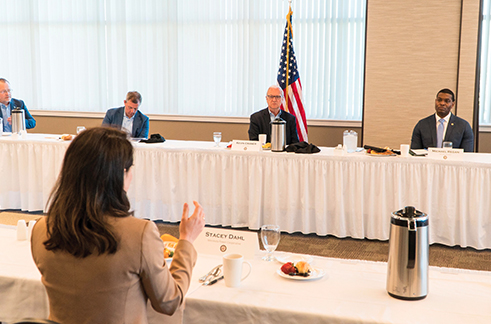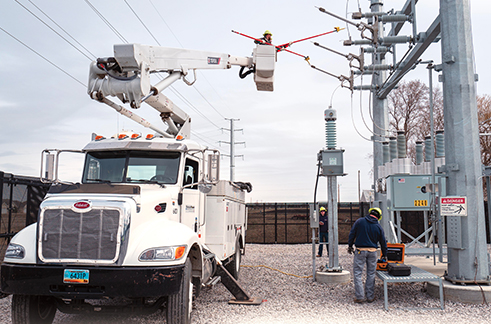Recently energized Berg substation elevates opportunities for Nodak Electric Cooperative
On April 16, several teams assembled at the Grand Forks site of Berg substation, the newest to be integrated into Minnkota Power Cooperative’s system of more than 255 substations across North Dakota and Minnesota, and the latest to join Nodak’s division of more than 50 distribution substations. After months of planning and construction, it was time to bring life to the lines and metal.
The anticipation? Electrifying.
“Everybody wants it to be perfect,” said power delivery substation engineer Kara Laframboise as she and other power pros from Minnkota and Nodak performed their final checks.
When power began to flow through Berg substation that day, it became the next link in a regional electric grid that rapidly has become more connected, intelligent and reliable – due in large part to the deployment of distribution automation (DA) technologies.
“With distribution automation, it’s not your typical substation anymore,” said Blaine Rekken, Nodak Member/Energy Services manager. “Our members should know that we’re actively working to advance our substations. Berg is the newest with this technology, but we’re also working with Minnkota, our power provider, to retrofit many of the older ones.”
Distribution automation uses state-of-the-art telecommunications equipment to allow control center operators to access more grid information remotely. Operators can see an issue as it happens – such as low or high voltage, blown fuses, overloads, etc. – and then either resolve the problem themselves or send the correct crews to the site immediately. Before DA, the control center had to rely on the “guess and check” method of dispatching crews, which could lead to longer outage times.
“This technology is going to create a more reliable system and safer environment,” said Minnkota System Operations superintendent Reed Daws. “If we deem something is wrong in a sub, we can de-energize it while we wait for someone to get there, and they can go in safely and see what’s going on. Instead of losing high-investment equipment like transformers, we might be able to de-energize them and save them. In the end, it’s going to be very valuable, not only on the financial side, but also keeping people with safe, reliable power.”
“Minnkota is putting more DA into more substations to make them smarter,” Rekken said. “Our collective goal is to provide power, and to do it with the least amount of disruptions. This is one of the ways we’re doing it.”
The new Berg substation is not only a smart substation – it’s a necessary one. The sub is energized for extra capacity for a growing Grand Forks area, relieving pressure on the existing system. It will also add needed redundancy and the ability to move power from one substation to another in the event of an outage. That means minimal outage times for members.
“We’re continually seeking ways to increase reliability. Our members are always at the forefront of our minds,” Rekken said. “When we add new substations, our members usually don’t see that – along with all of those other innovative things that happen behind the scenes. But we want to celebrate those advancements, because they help us meet our mission of providing the highest-quality electric service.”









